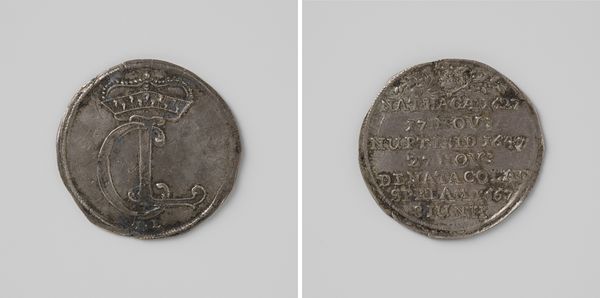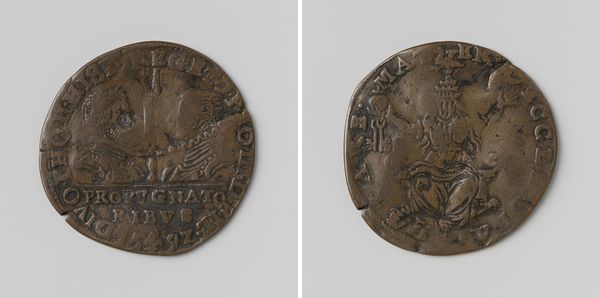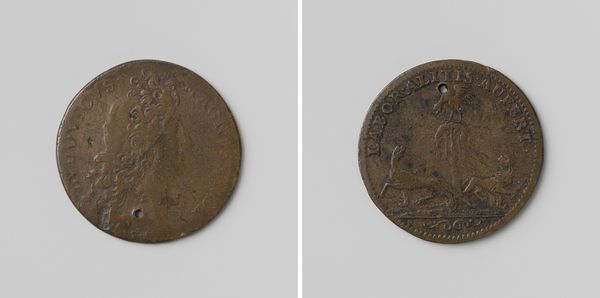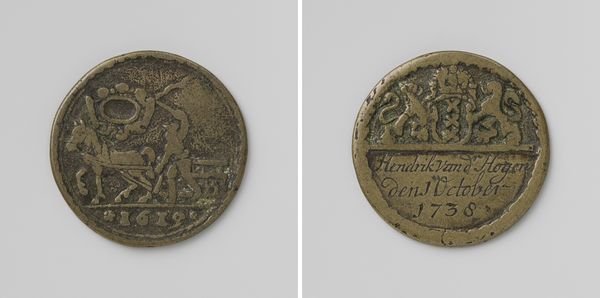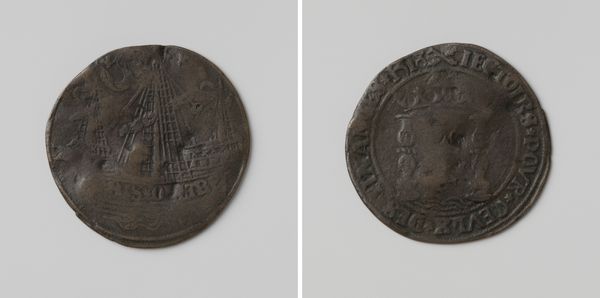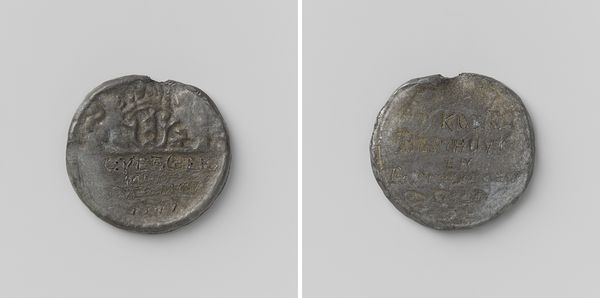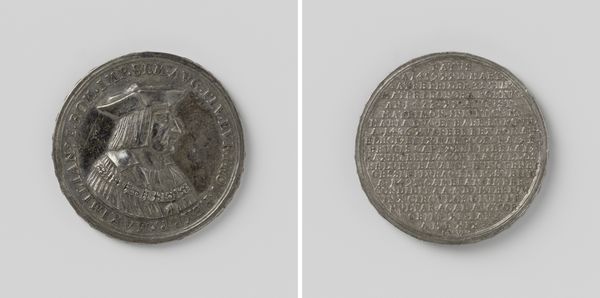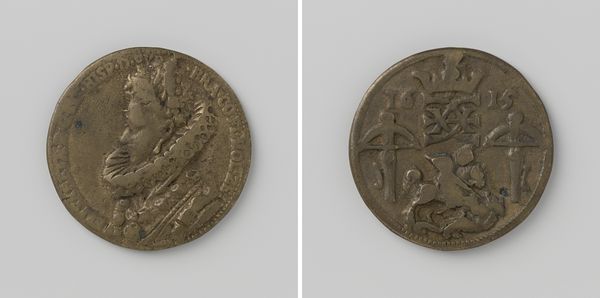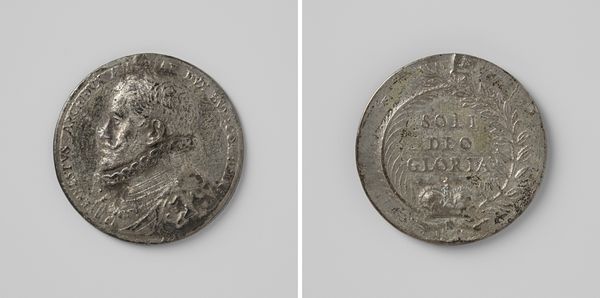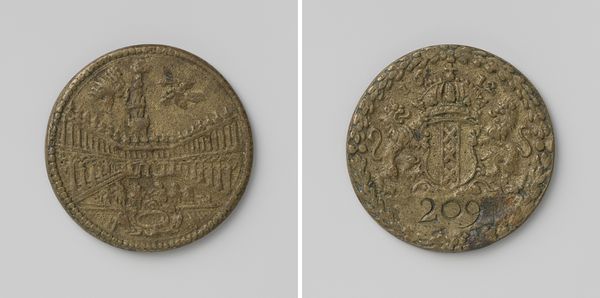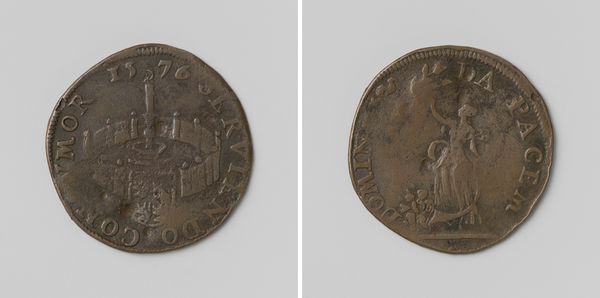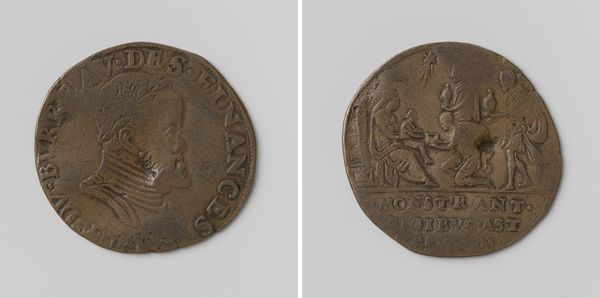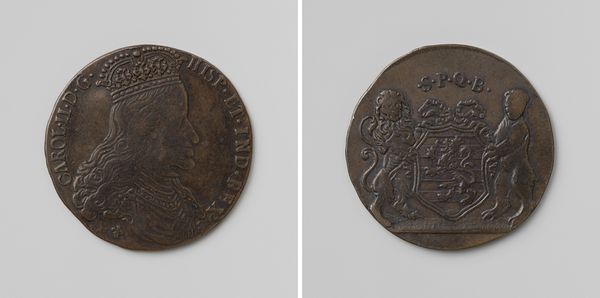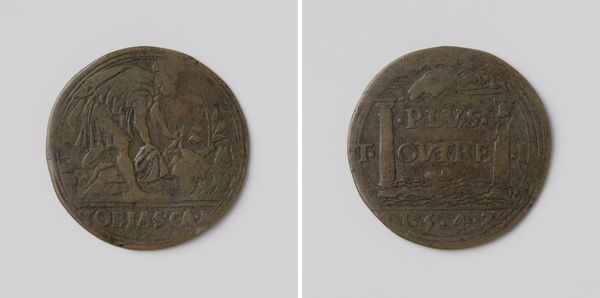
metal, relief, engraving
#
portrait
#
baroque
#
metal
#
relief
#
engraving
Dimensions: diameter 3 cm, weight 7.27 gr
Copyright: Rijks Museum: Open Domain
Curator: Looking at this gilded guild medal from 1736, crafted for the Amsterdam Slepersgilde—the guild of tow-boat operators—one is struck by the subtle ways civic pride manifested. Editor: It's deceptively simple at first glance, this Baroque relief on metal. But there is an immediate earthy feel to it; something so tactile about its age, that I wonder if it ever crossed the palm of an Amsterdam tow-boat operator. Curator: That's likely. Guild membership was fiercely defended and visually reinforced in society. These badges often carried very specific and locally charged symbols and it reinforced corporate identity within Dutch society. Editor: I notice the horse towing what appears to be a decorated cart on one side. A potent emblem, and I suppose the obverse depicts a scene, with what looks like vegetation, and the name "Kornelis Visser," and a date inscribed within a flat area on the bottom half of the coin. This tells me it commemorated an individual's contribution, but what did that contribution stand for? Curator: The horse drawing a boat highlights their labour of moving vessels through Amsterdam's canals, vital for commerce. "Kornelis Visser, den 20 Juny 1736" likely marked the date of Visser's recognition or admission to the guild, reinforcing their importance in city life. These images served to broadcast their status to a large populace within Amsterdam. Editor: Yes, that date plants it firmly in a moment and solidifies a single name against a symbol that stood for collective civic infrastructure, that single date grounds it in an emotional reality of who was responsible and recognised within that setting. The Slepersgilde aren't simply anonymous. It becomes personal, historical, almost an idol to a modern idea. Curator: Precisely. Beyond mere recognition, these badges asserted the guild's regulatory power, demonstrating their social and political place within Amsterdam society during the height of Dutch maritime trade and political power. This visual program would speak volumes to viewers familiar with Amsterdam social life and imagery. Editor: Considering how these images communicate values about community, and also of personal and even psychological reassurance; as we’ve unpacked it I see a rather complete symbolic summary. Curator: Indeed, its presence within the city conveyed civic participation in material form; these guild members literally bore a symbolic identity. Editor: Now I view it, this Baroque guild token, as more than just an old coin but an emblem of work ethic made sacred in its small way.
Comments
No comments
Be the first to comment and join the conversation on the ultimate creative platform.
